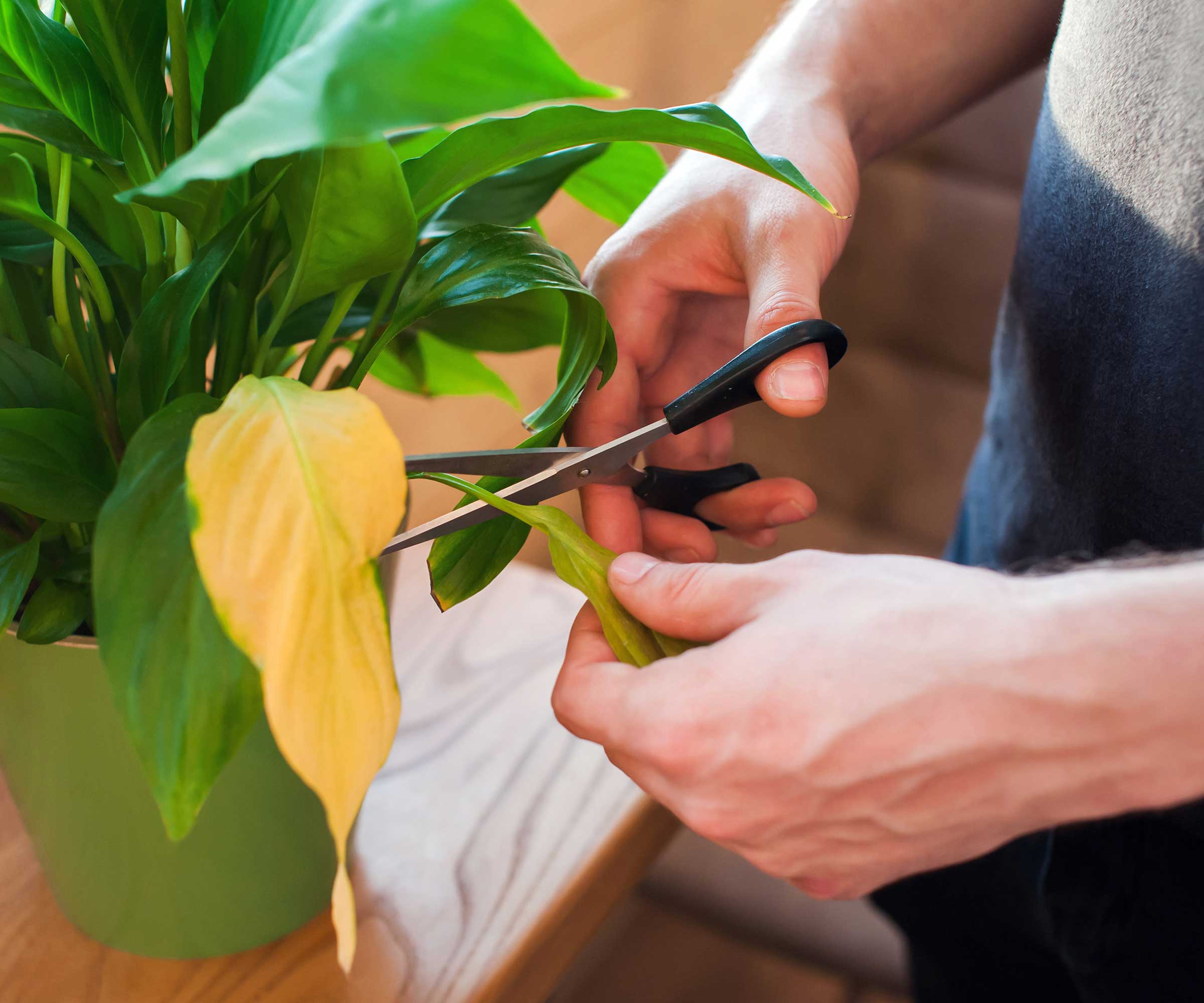Why is my peace lily turning yellow? 3 reasons and solutions
The houseplant experts explain what to do


Peace lilies are well-loved for their glossy and green leaves, alongside the elegant white flowers. But, they have a tendency to turn yellow if their environment isn't quite right, or simply as they age.
True, many would agree that they're one of the best indoor plants as they're generally not too fussy. But no plant is indestructible, and there are a few important peace lily care tips you need to bear in mind to ensure yours stays looking its best.
If yours is turning yellow, don't worry. There might not be anything wrong with it at all, and if there is, it's likely that it can be saved. It's just a case of checking the growing conditions, making any improvements necessary, and snipping off the discolored foliage to tidy up its appearance. This guide has all the info you need to know.

A former professional gardener and allotment-grower, Holly now flexes her green fingers by tending to her large collection of houseplants. Peace lilies are one of her favorites for their easy-care nature – she currently has three, including a variegated variety.

Peace lilies are easy to care for
3 key reasons that cause a peace lily to turn yellow
This handy checklist will help you provide the best conditions for your peace lily to keep it looking happy and healthy in your home.
1. Age
'When the "rosettes" of leaves are mature and well established it is quite natural for them to shed some of the older and unproductive leaves to concentrate energy into the young and vibrant foliage,' explains the Amateur Gardening magazine experts.
'It is also perfectly natural for the plant to shed the leaves that bore the flower stems – they have served their purpose and can be discarded. You may not have seen your plant do this before because it is still relatively young and up until now the leaves were fully active and not "old".'
In healthy plants, these will be replaced with fresh green growth, so it's really nothing to worry about. All you need to do is remove the leaves and flowers and continue to care for your houseplant in the usual way.
Design expertise in your inbox – from inspiring decorating ideas and beautiful celebrity homes to practical gardening advice and shopping round-ups.

Old, discolored leaves can be pruned
2. Wrong lighting levels
Lighting can also play a part. If leaves are tucked right underneath others and lack sufficient light, they can turn yellow, the Amateur Gardening experts explain.
These tropical plants don't like overly sunny conditions, either. Too much direct sun can also turn the leaves yellow, while brown streaks or tips are a telltale sign of sun scorch. The solution? Ensure your plant is positioned somewhere bright but with indirect sunlight throughout the day.

These plants thrive with plenty of bright, indirect light
3. Too much water
'In our experience the most common cause is overwatering,' says Joanna Turner of Fiddle & Thorn. As well as yellowing leaves, this can also make a peace lily droop.
'If this is the case, it’s best to simply let the soil dry out a little bit,' she continues. 'Getting into the habit of checking the moisture levels before watering is a great way to keep on top of what your plants need.'
Basically, if the top inch or so of soil feels dry, it's time to water. Otherwise, wait a while longer. Harvested rainwater is best as it has fewer chemicals than tap water. Discard any excess water from a pot saucer if it's drained out of the pot, rather than allowing your peace lily to sit in it.
In worst-case scenarios, overly wet soil can lead to root rot and the death of the plant – this actually happened with one of my own peace lilies. To salvage it, I divided the plant and discarded over half before repotting the last healthy section into fresh soil and a container that had drainage holes.

Waterlogged soil can damage these plants
FAQs
What should you do with the yellow leaves on a peace lily?
Pruning a peace lily is easy and can quickly make your plant look as good as new again. Just remember to cut each leaf out by the base, and to always use scissors that are sharp and clean.
Brown or yellow tips can also be carefully trimmed off – follow the shape of the leaf for a natural look.
Why have the leaves on my peace lily turned black?
'It sounds as though your lily is suffering from too much water,' explains John Negus, a gardening expert from Amateur Gardening. 'I would recommend stopping watering for at least two weeks, or longer if the temperature is lower, to let the compost dry out.
'You could even knock the plant out of its pot and replace some of the sodden compost with fresh. Still don’t water the plant, to give the roots time to recover.'

Holly started writing about gardening five years ago, and she is a regular contributor to Homes & Gardens. She has also written many gardening features for Woman & Home and Real Homes, too. She has previous experience as a professional gardener, where she helped to plant and maintain private gardens. Holly has also looked after allotment plots over the years and loves to grow her own flowers and veggies from seed. In her spare time, she enjoys visiting local gardens, botanical drawing, and tending to her ever-growing collection of houseplants.